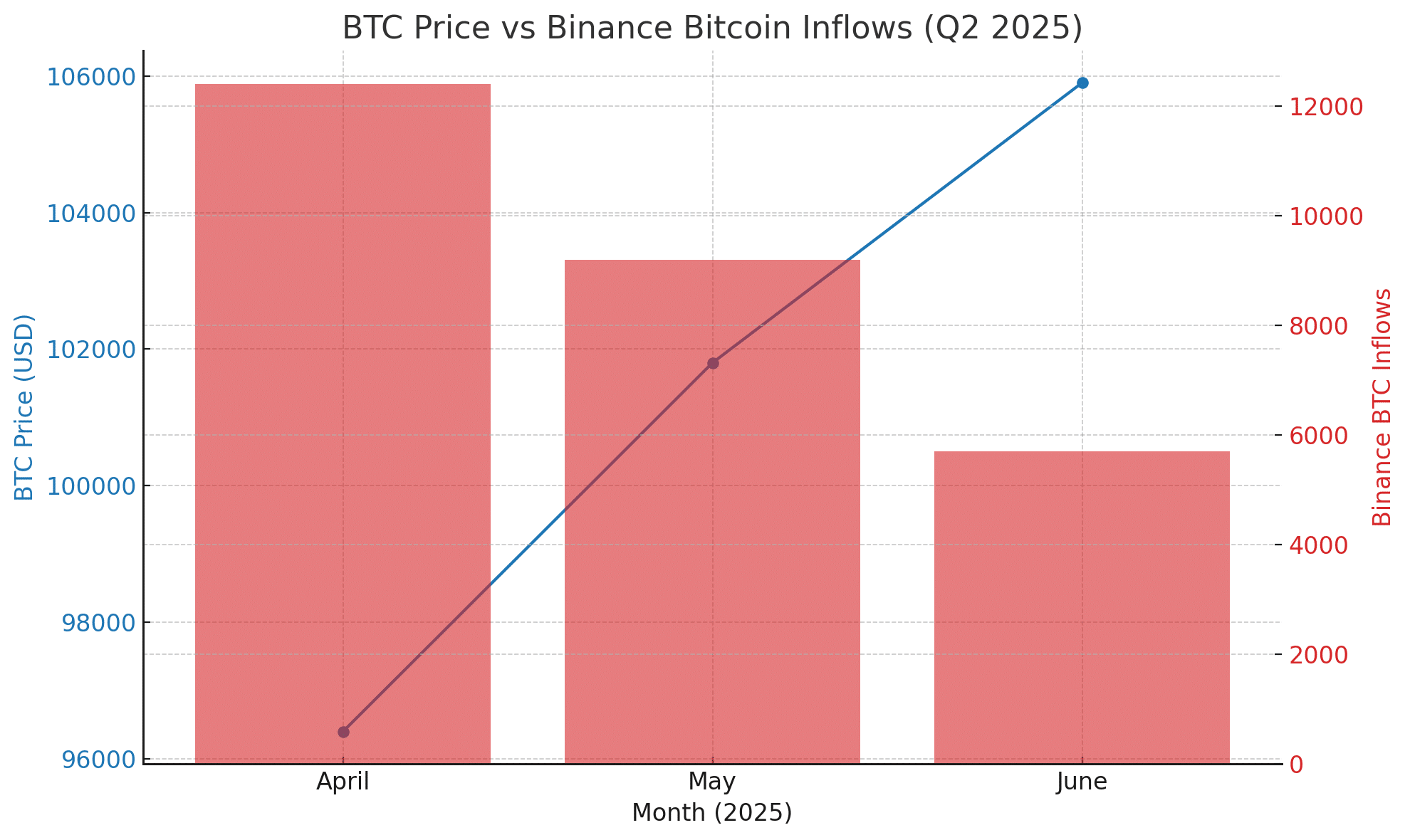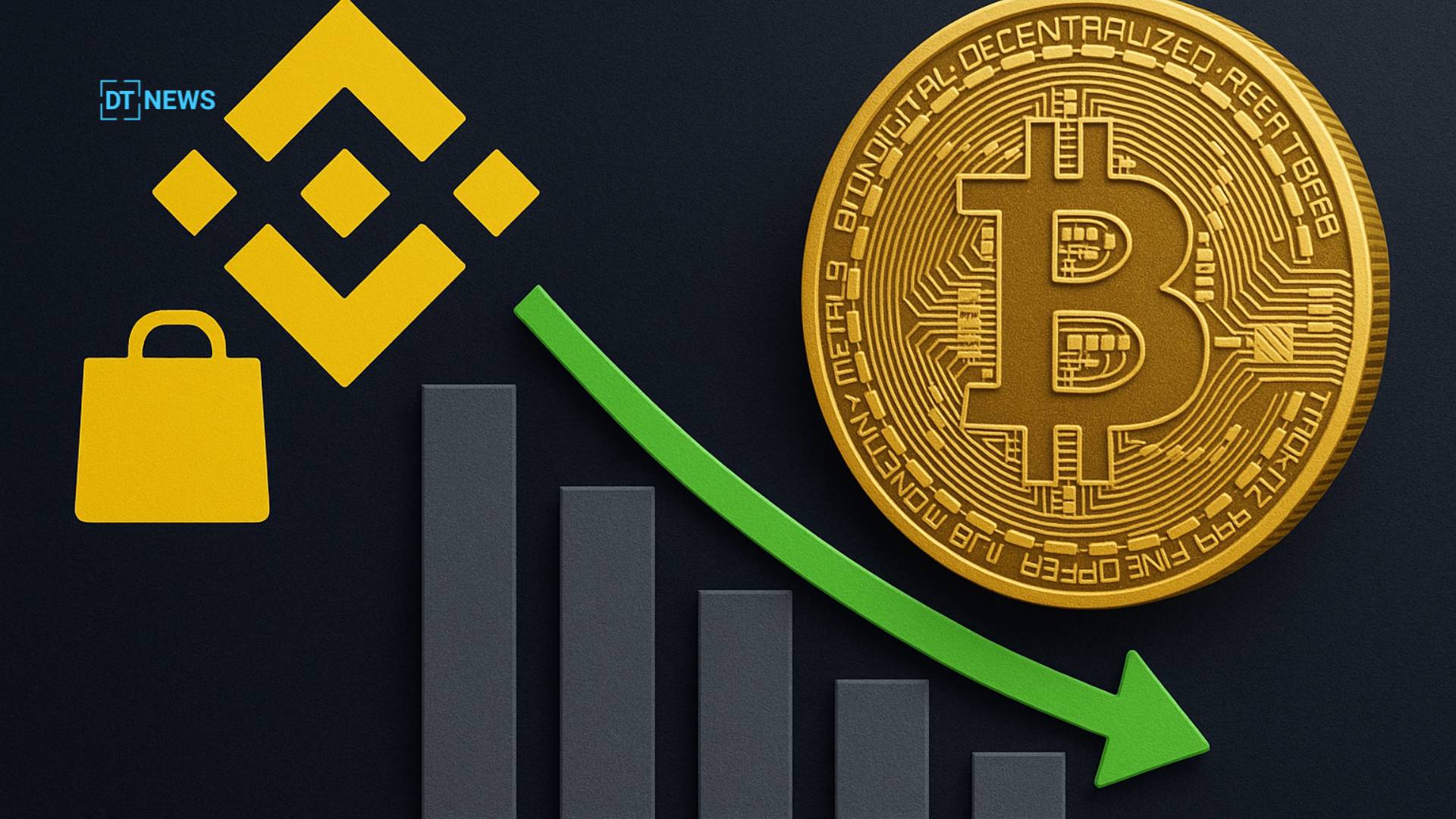“Binance Bitcoin inflows” have slumped to only 5,700 BTC in June, their weakest reading since early 2020. The slide is less than half the 12,000 BTC four-year average and barely a quarter of the 24,000 BTC panic high registered during the FTX collapse. For traders watching the Bitcoin exchange reserve trend, the sudden drought in deposits raises a big question: is this a bullish supply squeeze or a red flag for liquidity?
Historical Context: From Panic Peaks to Post-Halving Drought
Every spike in Binance Bitcoin inflows during this cycle has tagged a local top, 17,000 BTC in last August’s $69 k correction, more than 20,000 BTC in March when Bitcoin first breached six figures. This time the opposite holds true. Despite BTC hovering above $105 k, the deposit gauge has flat-lined, echoing Glassnode’s May report that sell-pressure is “cooling off,” a milestone for the broader Bitcoin exchange reserve trend.
Expert Analysis: What the On-Chain Sleuths Say
CryptoQuant analyst Darkfost calls the current 5,700 BTC figure a “holding phase” in which both retail and whales are reluctant to part with coins. Axel Adler Jr. told Cointelegraph that the inflow/outflow ratio now resembles the late-2023 period that preceded the breakout to $100,000.

“Declining Binance Bitcoin inflows remove immediate sell pressure; once demand perks up, order-book depth vanishes fast,” he noted.
Glassnode’s Week-19 note framed the same pattern inside the wider Bitcoin exchange reserve trend: coins are clustering in cold wallets, while spot demand on Coinbase and ETFs stays “intensely net-positive.” Historically, that combination precedes vertical price discovery.
Market Impact and Technical Backdrop
Momentum traders point to Bitcoin’s reclaim of its 50-day EMA as confirmation. AInvest reports that thin supply on Binance now meets steady demand; the ratio underscores a persistent reserve trend that favors upside continuation.
Price Table: BTC vs. Binance Deposits
| Month 2025 | BTC Price Close | Deposits to Binance |
|---|---|---|
| April | $96,400 | 12,400 BTC |
| May | $101,800 | 9,200 BTC |
| June* | $105,900 | 5,700 BTC |
*June data as of 26 June 2025. Sources: CryptoQuant, CoinGecko.
Regulatory Pulse
While technicals look bright, policy risks linger. Binance still faces an EU inquiry into stablecoin compliance, and the U.S. Senate is debating stricter KYC mandates for offshore exchanges. Sudden rule changes could jolt the current reserve pattern by forcing custodial reshuffles and emergency deposits. Traders remember that policy headlines can trigger flash flows within minutes, turning complacency into a scramble for liquidity.

A Signal Hiding in Plain Sight
For seasoned traders, the sharp drop in Binance Bitcoin inflows isn’t just another chart anomaly; it’s a potential prelude to a breakout. Historically, when exchange reserves shrink and spot buying stays steady, Bitcoin enters a low-supply, high-demand zone.
This setup often front-runs explosive rallies. If you’re sidelined or overexposed to short-term volatility, now is the time to reassess your positions. The current Bitcoin exchange reserve trend hints at tightening supply just as institutional accumulation continues through ETFs. In crypto, silence at the gates often precedes the loudest price moves.
What Comes Next?
If the reserve ratio stays low, meaning deposits remain subdued, analysts see room for a grind toward $120 k in Q3. However, any macro shock that pushes exchange deposits back above the 15,000 BTC line would instantly flip sentiment. Traders should track wallet-monitor bots and derivative funding rates for early signals. Stay nimble out there.
FAQs
What causes “Binance Bitcoin inflows” to spike?
Large holders often transfer coins to the exchange when they plan to sell, triggering sharp upticks in the metric.
Does a low “Bitcoin exchange reserve trend” guarantee a bull run?
No. Reduced supply only removes immediate sell inventory; external shocks can still drive prices lower.
How often are inflow figures updated?
On-chain providers such as CryptoQuant refresh the data hourly, offering near-real-time insight.
Glossary
Binance Bitcoin inflows: Total BTC entering Binance deposit wallets over a set period.
Bitcoin exchange reserve trend: Direction of aggregate BTC balances held on centralized exchanges.
Exchange inflow/outflow ratio: 30-day SMA comparing deposits to withdrawals.
50-day EMA: A moving average popular among trend traders for spotting momentum shifts.



















































































































